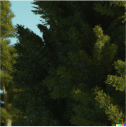


















































Together with professor Bernard Nijstad, we dove into the topic of Paradox Thinking and tried to answer questions like: ‘How do conflicting elements (e.g. social versus financial) cause tension?’ and ‘How do you deal with that – as a leader, as a team, as an advocate for change?’. Are compromises the solution, or do you pick a lane and go for it at full force?
Bernard Nijstad, cycling fanatic and professor of Business & Economics at the University of Groningen, has a background in psychology and specialises in decision-making and organisational behaviour. He studied Social Psychology in Utrecht and obtained his PhD degree there. Following that, he worked as an associate professor at the University of Amsterdam for 9 years and then transferred to the University of Groningen, where he has now been employed and conducting research for over 13 years.
Bernard's motivations behind his work stem mainly from the opportunity to 'discover'. It can be very exciting and fun to try to figure out how things work, and then to test whether the assumptions that you make hold up in the real world. Going back and forth between the abstract and the concrete is his strength. Seeing a practical problem and abstracting it into a concept, but also the other way around: thinking about relatively vague concepts such as Paradox Thinking, and then determining what that means in concrete terms.
Turning a hypothetical into something more tangible is mostly about how you can research and measure it. He finds it extremely exciting to find out whether his assumption is correct.
In 2016, Bernard received a prestigious VICI Grant to start a research project on creativity in organisations. Creativity often proves to be a driving force in solving issues within companies. It provides different insights and leads to innovation. However, creativity seems elusive: wanting to direct or “enforce” creativity in employees sounds almost paradoxical. Yet, every human being is capable of creativity, while working conditions have a great influence on the creative abilities of individuals as well as teams.
In the study, Bernard and his colleagues looked for ways to make the most of the employees' creativity, while aspiring to a better understanding of the role of creativity in organisations.
Bernard and his colleagues examined a number of areas of tension:
— Should you give creative employees freedom, or should you constrain their output through boundaries?
— Should you encourage/allow conflict and disagreement, or is collaboration more important?
— Should creativity and innovation be focused on refinement and efficiency (exploitation) or on entirely new markets, products, and services (exploration)?
In doing so, it was also significant to understand the relationships between individuals, teams, and the organisation as an entity. So, they addressed the following questions as well:
— How can an individual's idea ultimately contribute to the innovative power of the entire organisation?
— How does organisational structure affect the creative functioning of a team or an individual employee?
Bernard's research resulted in numerous interesting publications, for example on the effectiveness of brainstorming groups and how creativity rarely results from 'flexible thinking' (letting your thoughts wander) but rather from 'persistent effort', which often leads to very effective concepts and solutions.

In the first half of the last century, the idea that there is only one ideal form of organisation was widely accepted. One size fits all. But in the 1960s, Fred Fiedler's contingency theory was proposed, which is based on the idea that the most successful organisational shape or structure actually depends on all kinds of environmental factors (suppliers, customers, competition, et cetera). In other words, one size does not fit all.
This change led to new, unique organisational models. However, it still proved difficult to find an answer to paradoxical areas of tension such as, for example, financial versus social interests. You could say that the contingency model offers little flexibility. In order to act decisively against organisational tensions, an either/or approach emerged, which boils down to convincingly choosing one 'side'. No compromise, no indecision. Making hard choices for what is most important (and thus sacrificing what is considered less important). Yet that rarely turned out to produce a sustainable solution.
A few decades later, organisational thinking gradually changed again, led by psychiatrist Albert Rothenberg of Harvard University, among others. He interviewed and analysed various revolutionary thinkers and found that they actually benefited greatly from the conscious simultaneous examination of paradoxes. They proposed a different way of dealing with problems and tensions and achieved groundbreaking results in doing so.
Think of Albert Einstein, who contemplated that an object could be both at rest and in motion, depending on the position of the observer. That consideration led to his relativity theory. This cognitive approach, which is not really new, has now also reached the office and can be seen as the counterpart of the either/or approach. In short: the and/and approach.

In 2010 a paper by Smith & Lewis was published, called Paradox Theory. The publication starts from the concept that in organisations there are four different elements between which – and within which – tensions arise:
1. Learning: competence development
2. Organising: procedures you follow
3. Performing: goals you want to achieve
4. Belonging: identity
These tensions are always present and are inherent to an organisation and its elements. They are often paradoxical: contradictory but interrelated. And you can’t properly resolve them (without sacrifice) either. Sometimes you can temporarily fix part of the problem, sure, but eventually the roots of those problems will always come back. It mainly becomes a question of how you deal with them going further.
In order to make these paradoxical tensions a tad more tangible, let’s discuss a few cases.
In organisational change, tensions arise between several of the 4 elements introduced above. A change in culture or structure often encounters resistance from staff, which is often based on threats to identity (belonging). Your team is going to change while you're highly identified with that team. Or the type of work you are going to do is changing, whereas before you were proud of, and good at the work you did.
The evolution is often necessary to stay healthy as a company, but does create tensions that can also threaten company health – presenting another paradox. Performance typically drops temporarily at first, average job satisfaction and togetherness as well. This typically returns to the longer term, as morale is built and facilitated through collaborating in the creation of the “new normal”, a process honouring both the resistance and creation of belonging.
You want to optimise your process and produce your products or deliver your services as effectively as possible. But if you only focus on that part of your operation, you will be out of business in the long run. You also need to innovate (learn) to keep up and stay ahead of competition. In the short-term, learning and innovating have a disruptive effect on overall performance. That tension will always remain, but you can deal with it more fittingly.
A common occurrence is the 'spatial separation' between performing and learning. Think of the production and sales departments (performing) and an R&D department (learning). Keeping these departments separate in the process of innovation results in a crucial deficiency: letting people from just one department (R&D) think about future innovations and not involving, say, production, while you would very much like their input as well.
It is common knowledge that innovations also emerge in production departments. But how do you organise that? After all, routine work is necessary to keep daily operations running.
One solution that has led to success is to reward innovation. Once people know that there is a personal benefit to thinking (either during or after work) about future possibilities, they are often more inclined to think and contribute creatively, resulting in innovation. Both sides of this “dilemma” are rewarded, and it’s no longer an either/or approach.
Regarding leadership, we also see several areas of tension that you can deal with very consciously. As a manager, you want to be close to your people, but at the same time you need to maintain a professional distance. How can you be a reliable and approachable leader who supports people, while you also have to be able to set processes in motion and, where necessary, manage and change them? And do you let people do their work freely, or do you keep control? More creative freedom is beneficial to both the staff and the organisation, but at the same time, you don't want there to be no structure at all.
One way to achieve this is by making it very clear what the specific roles and objectives are, but leaving it up to the team to find a way to achieve those objectives. That may sound like kicking at an open door, but in a layered organisation this quickly becomes complex.
This is how the concept of Paradoxical Leadership arises: an and/and approach. Keeping control, but also giving autonomy. Keeping a distance, but also being reliable and approachable. Treating everyone the same, but also connecting well to different characters.
The concept of Paradox Thinking does not enable you to solve paradoxical tensions for good. It is much more about being aware of those areas of tension and thinking cleverly about the ideal solution to address those tensions. Situations in which you comply as much as possible with the most important issues. That solution transcends compromise and does not rely on the old-fashioned either/or thinking, but evolves into and/and.
Applying Paradox Thinking involves two simple steps:
— very consciously and structurally, researching areas of tension and how they manifest themselves in your organization;
— determining how you can optimally respond to those contradictions.
Stay tuned for future episodes of Talking Science with Nymark by following us on LinkedIn.